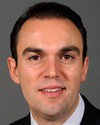Thank you very much.
My comments will focus on the presentation Canada made in Geneva last February 3. Then I will talk about the process of follow-up to the presentation and the response to the recommendations Canada received.
In preparing for Canada's appearance on February 3 before the working group of the Human Rights Council, we realized the range and the complexity of the issues, frankly, that were before us. Indeed, many of these issues require multi-faceted responses. Therefore, the preparations for Canada's UPR involved a variety of federal departments and provincial and territorial governments.
Civil society also has an important role to play. Canadian Heritage organized engagement sessions with civil society and aboriginal organizations in January prior to Canada's review. In addition to a session held in the national capital, sessions were held in five regions, including a session organized by the Government of Quebec.
We know that some civil society groups were disappointed with the timing and nature of the engagement. They would have preferred to be consulted prior to the submission of Canada's report. That is what we had originally intended, but the realities of both the federal and the Quebec elections during the fall meant that the sessions had to be postponed. We remained committed to having these sessions and proceeded with them in January, albeit the report had been submitted.
We heard the views and concerns of a wide cross-section of stakeholders during these sessions. These views were shared across governments, informed our discussions and preparations for the UPR appearance in February, and also have been taken into account as we considered the recommendations.
The Deputy Minister of the Department of Justice, Mr. John Sims, made the presentation for Canada as head of the Canadian delegation at our first UPR. The delegation was made up of officials from various federal departments—Indian Affairs and Northern Development, Citizenship and Immigration, Foreign Affairs, International Trade, Justice, Human Resources and Skills Development, Canadian Heritage—as well as officials representing the provinces of Quebec and Saskatchewan. As several matters dealt with matters within provincial jurisdiction, it was important for provincial governments to be represented.
A number of key documents that were available on the UN website were made available for the review, including, of course, Canada's national report, a compilation of the information contained in the reports of treaty bodies and special procedures in other relevant UN documents, and a summary of information contained in the report submitted to the UN by 50 stakeholders.
On the morning of February 3, three hours were devoted to examining Canada's human rights record. Canada was allotted one hour in total out of the three available hours to both give an initial presentation and to respond to questions raised during the course of the interactive session.
Many of the issues raised by other countries were anticipated and pertain to the challenges that were acknowledged in our opening statement and during our responses to the questions. The 68 recommendations contained in the report of Canada's UPR touched, of course, on a number of themes, including, as you know, aboriginal issues, ratification of international treaties, reducing socio-economic disparities, violence against women, racism, discrimination, etc. The report was broadly distributed across the federal government and the provinces and territories.
So what did we do in terms of follow-up? We had two key objectives in the process that followed our February appearance. The first was to ensure that our response was both timely and considered. Meeting this objective has meant engaging federal government departments, provinces, and territories as well as civil society and aboriginal organizations in what amounts to being an extremely short period of time.
Our second objective has been to set the stage for implementation over the next four years, in the lead-up to the next review. Canada's UPR review has highlighted the importance of working horizontally across government and with the provinces, territories, and civil society. All of the interested players have factored into the follow-up process.
Let me refer you to the diagram we've put together; I think it might be helpful. As you can see from the grey strip down the left side of the page, the timeframe has been very tight to meet this deadline. I'd like to draw to your attention the 11 boxes that are on the top of the page. In order to facilitate our consideration of the 68 recommendations, we clustered the recommendations according to themes. Each cluster was attributed to a lead department, which in turn has worked with colleagues from other relevant federal departments in considering the recommendations and providing input into the official response. So you have the lead departments and you have a mapping, following this page, of the 68 recommendations and how they tie in to those departments.
I have to say that this is a new mechanism that we have put in place for the UPR, and we're monitoring it very carefully. We've been meeting about every two weeks. It's a case in point, in which the UPR has brought a very new horizontal approach to the issue of human rights.
As you can see, the box just below the clustering shows our interdepartmental committee. Canadian Heritage, Justice, and Foreign Affairs have the responsibility of integrating the information provided by the federal departments, civil society, and aboriginal organizations as well as the provinces and territories. It is all collated, and the three departments are working together to integrate all of these responses.
I'd like to highlight the boxes on the left. Canadian Heritage has the particular responsibility of ensuring that civil society and aboriginal organizations are engaged in the process. In order to inform Canada's response, we sought the views of civil society and aboriginal organizations on the UPR recommendations.
To maximize the process and hear from the widest possible number of stakeholders, we have conducted a web-based consultation. The report was posted on the Canadian Heritage site and a dedicated e-mail address was set up to receive input. We enhanced this process by adding a series of questions to stimulate the response.
In addition, two face-to-face sessions were held on April 21 and April 22 in Ottawa. One session was geared toward civil society, while the second was geared toward aboriginal organizations. These sessions, as well as the web-based consultation, focused on the recommendations and mirrored the thematic approach used in the government discussions.
We have heard many thoughtful and important views and suggestions in our meetings with NGOs and aboriginal organizations. A particularly important question that has been discussed is how Canada will address the recommendations concerning effective implementation and ongoing engagement over the course of the next four years.
We were pleased to hear their views on the issue, not only to inform Canada's immediate response to the council, but also to inform our discussions on how we move forward with engagement of civil society and aboriginal groups in the future.
Of course government departments and governments already consult with civil society and aboriginal organizations on a regular basis on the specific issues that are covered by international human rights treaties. It will be important for us not to duplicate or supplant these existing discussions, but rather to focus on where we have gaps, to address any additional need in terms of the horizontal nature of UPR.
Next I'd like to draw to your attention the red boxes on the right-hand side of the page and the essential participation of provinces and territories.
The Government of Canada has been consulting with provinces and territories through the Continuing Committee of Officials on Human Rights, a longstanding federal-provincial-territorial consultative mechanism that is chaired by Canadian Heritage. The committee plays a key role. Each of its members has the responsibility to obtain and integrate the views of all the ministries in that jurisdiction that are affected by the recommendations. Through the committee, the provinces and territories help to shape Canada's report and are now helping to shape Canada's response.
The information obtained as a result of all these federal government mechanisms, with the help of federal-provincial-territorial consultations and our consultations with civil society and Aboriginal organizations, was sent back to the key departments: Canadian heritage, justice and foreign affairs. They continue to work closely with the UPR follow-up framework in preparing Canada's response. The draft response will shortly be approved by the three ministers.
Once Canada's response has been finalized and approved, it will be submitted to the United Nations by Canada's mission in Geneva. Following submission, we will post the response on the Canadian Heritage website so that it will be publicly available.
The date for Canada's appearance at the Human Rights Council has been set for June 9. We are aiming to submit our response in the week prior to Canada's appearance, hopefully on June 2. That's our target date.
During the one-hour session on June 9, Canada will have 20 minutes to officially present its response. Civil society organizations and national human rights institutions will also have 20 minutes to make presentations at that session, and 20 minutes will be set aside for statements from member and observer states. So 20, 20, and 20 minutes will make up our hour.
At the June session, the outcome of Canada's universal periodic review will be adopted through a council decision. There are three documents here--the report of the working group, which contains the 68 recommendations; Canada's response; and, lastly, a summary of the June plenary discussion, that one-hour session. Those three things will in fact constitute the outcome of Canada's review. Once all of these documents are available, they will be tabled in Parliament by the Minister of Canadian Heritage.
In conclusion, we've had a lot of work to do in the last couple of months. Officials at all levels have been working very diligently to ensure that the work is completed within this timeframe. It has been a challenge, given the number of jurisdictions involved, in preparing a response that, frankly, everybody can agree to. However, I'd like to stress that although our immediate focus is on the development of Canada's response, we certainly understand that this is not the end of the process. It is in fact the beginning of a four-year cycle until Canada's next UPR report. The role of the response is to set the stage, in fact, for the next four years.
At this point, having concluded the presentation, I'm certainly available to answer any questions; we all are.
Thank you.



